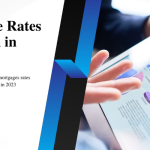3 Minutes Read
I am the author of this blog and also a top-producing Loan Officer and CEO of InstaMortgage Inc, the fastest-growing mortgage company in America. All the advice is based on my experience of helping thousands of homebuyers and homeowners. We are a mortgage company and will help you with all your mortgage needs. Unlike lead generation websites, we do not sell your information to multiple lenders or third-party companies.
You checked out Freddie Mac’s average mortgage rate report. You looked at Bankrate too. You called your mortgage lender – or multiple lenders – but your mortgage rate quote is higher than the rates you see online. Why?
If you are consistently being quoted a higher rate than what you see listed online you likely pose more risk to the lender and the bump to your mortgage rate is the result something called “risk-based pricing”.
More formally, it’s known as the loan-level pricing adjustments (LLPA). They apply to Fannie and Freddie – aka conventional – loans.
The official definition of loan level pricing per Fannie Mae and Freddie Mac is:
“A loan-level pricing adjustment (LLPA) is a risk-based fee assessed to mortgage borrowers using a conventional mortgage.Loan-level pricing adjustments vary by borrower, based on loan traits such as loan-to-value (LTV), credit score, occupancy type, and number of units in a home.”
Loan traits which affect your loan-level pricing adjustment include:
- Occupancy – investment property or vacation homes cost more
- Property type – condos tend to carry more risk than single-family homes
- Units – mortgaging a multi-unit home (i.e. 2-unit, 3-unit, 4-unit)
- Doing a cash-out refinance at any loan-to-value
- Subordinating a second mortgage via a piggyback loan
- Credit score – higher the better
The more risk factors present, the higher your mortgage rate. Economics 101.
Get a Customized Live Rate quote
Credit scores are a big part of LLPA pricing. If your credit scores are in the mid to high 600 range, you’re going to get hit with some significant LLPAs unless you owe less than 60% of the value of the property.
This is why it’s important to keep your credit scores as high as possible – ideally above 740 which is where loan-level pricing adjustments stop affecting your interest rates.
If you have a 741 middle FICO credit score you will basically have the same interest rate that a borrower with a 794 FICO score would have.
That said, the opposite also holds true for lower scores. If you have a 620 you might have to pay as much as 3.5 percent to obtain a mortgage at the same rate that the borrower at 740+ credit score.
Which leads us to the other big player in loan-level pricing adjustments – loan-to-value (LTV)
Making a mortgage loan on a property at 60 percent loan-to-value is far less risk for a mortgage lender. Why? Because if they do have to foreclose on that home they will be able to sell it and recoup their investment or possibly even break a profit.
On a fully mortgaged home – with loan-to-values beyond 90 percent – lenders generally take a loss if they have to foreclose.
Historically, lenders recoup about 80 percent of the value of the home after a foreclosure sale. The cost of maintaining the home while vacant – in combination with the legal costs of foreclosing – are significant.
That is why the foreclosure process of the state your property is located plays into rates too.
In the “non-judicial foreclosure” states – where the foreclosure process is more expeditious and affordable for lenders – rates are generally slightly lower than in “judicial foreclosure” states where the process to repossess a home is significantly longer and requires more legal fees.
How the property is occupied is a big factor as well. When a property has an occupancy other than primary residence – it’s a vacation home or investment property – it is riskier for mortgage lenders.
Think about it. If you own two homes and one is your primary residence that you and your family occupy and another is an investment property, which of those properties would you let go first if you fell on difficult times?
In addition to that, tenants can be unpredictable and may cause damage to the home that makes it difficult to rent out again or sell without significant investment in repairs and renovations. What if you don’t have that money to make those fixes?
That’s why the rate hits for investment properties tend to be significantly higher than those for a primary residence.
If you’re willing to put down 25 percent (75 percent loan-to-value), the loan level adjustment is 2.125 percent. However, if you’re only willing to put down the minimum 15 percent, the LLPA hit is a whopping 4.125 percent.
Once you understand how risk-based pricing works, you’ll be better equipped to construct your financial profile to qualify for the best rates.
If you want to avoid loan level pricing adjustments you’d better have 40 percent down and a 740+ credit score. If not, you present risk and risk equates to a higher interest rates.
Get live rate quote customized for you
You May Also Like:
- 10000
- 10000
- 10000Mortgage Rates How to Shop Mortgage Rates Like a Pro This easy-to-follow guide covers everything you need to know about shopping for mortgage rates, and how to do it like the pros. Start from the beginning or jump in wherever you are to continue! 1 Basics of Mortgage Rates Where…






